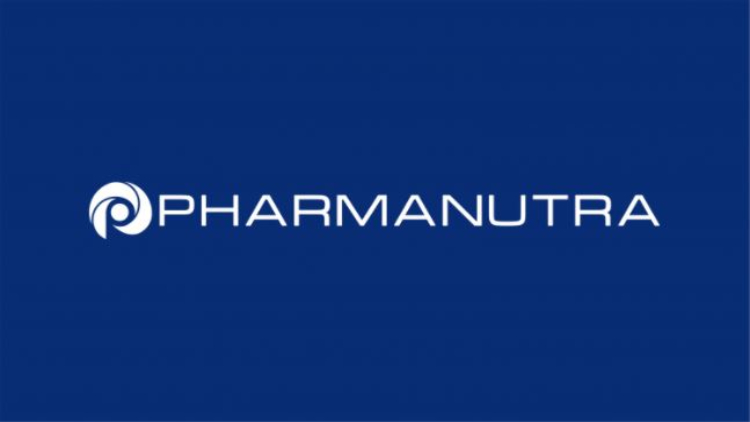Promotional Features
How the right kind of magnesium can be effective for muscle cramps
Muscle cramps are sudden, involuntary contractions or spasms in one or more of our muscles. The contraction of a muscle is often accompanied by a painful sensation and stiffness in the movement of the affected anatomical area.
Contractures, on the other hand, can be confused for muscle cramps but, in reality, they are defined as real muscle shortenings, resulting in the inability of the muscle to relax normally. The cause that generates muscle contracture originates within the muscle tissue itself (myogen).
The underlying cause of a muscle cramp, although not yet fully clarified scientifically, seems to focus on two potential mechanisms: one is related to dehydration; and the other is related to neurological disorders (neuromuscular).
As a result of muscle cramping, a muscle micro-injury is created, often caused by excessive stress, mainly due to uncontrolled or sharp movements.
Often muscle cramps are associated with intense and prolonged exercise and can occur both during and immediately after finishing the activity. In addition, cramps may be associated with pregnancy and, in older subjects, occurring during periods of prolonged inactivity, such as lying in bed at night.
Summing up, muscle cramps are more frequently found in these states:
• Muscular and postural imbalances
• Bad positions over time
• Poor level of training
• Exercises performed on cold muscles
• Performing very intense sports performance
• Dehydration or insufficient hydration
Benefits of magnesium
Magnesium is a macro-element available in variable quantities between 22 and 26 grams, of which more than 50% is mineralized at bone level. In the body, magnesium acts as a cofactor for more than 300 enzymes and therefore is involved in numerous processes, ranging from the synthesis of essential neurotransmitters at the central level, to the production and release of cellular energy. In addition, magnesium, acting in balance with calcium, also intervenes in the regulation of fundamental processes such as muscle contraction, heartbeat, coagulation and blood pressure.
This mineral is essential for our health, as it contributes to:
• Normal energy metabolism
• The wellbeing of the nervous system
• Reducing fatigue and facilitating muscle relaxation
• To normal psychological function
• The maintenance of healthy bones and teeth
• A normal electrolyte balance.
Magnesium is particularly abundant in bran, leafy vegetables, legumes, cereals and bananas.
A deficiency of this mineral is usually manifested by cramps, physical and mental fatigue, irritability and insomnia.
The role of magnesium in muscle contraction
Muscle contraction is a process that requires energy and involves the combined action of the filaments of actin and myosin, protein molecules that form the myofilaments that make up the sarcomere, the functional unit of striated muscle tissue. The skeletal musculature is the active component of the locomotor system and, thanks to the energy provided by the ATP molecule, is able to contract to allow the physiological movement of our body. In the process of muscle contraction, magnesium is able to stabilize the adenosine triphosphate (ATP) molecule, which would otherwise be unstable. As illustrated in Figure 1, each myosin molecule has two binding sites, one for ATP and one for actin. ATP hydrolysis in ADP (adenosine diphosphate) + P provides the energy needed for muscle contraction.
Above: Mechanism of muscle contraction
The whole process leading to muscle contraction can be schematized in distinct phases: first the attack of the ATP molecule on the myosin head, then follows the hydrolysis of ATP to form ADP plus a phosphate group.
In addition to being involved in this cycle of reactions, magnesium also influences the process of muscle contraction/relaxation by intervening in contrast to the action of calcium, as an increase in its intracellular concentration gives the signal to trigger muscle contraction. On the contrary, when within the muscle cell the amount of calcium decreases and the concentration of magnesium increases, muscle relaxation occurs.
Sucrosomial® magnesium - UltraMag®
Not all supplements on the market contain the same type of magnesium and this is the fundamental difference. In fact, magnesium can be found in the form of several salts:
- inorganic, such as magnesium oxide
- organic, such as magnesium pidolate
- chelates, such as magnesium bisglycinate
Among these, magnesium oxide (MgO) is the one with the highest content of elemental magnesium, although its absorption is very limited by the body. Due to this limit of absorption, magnesium generally has a poor gastrointestinal tolerance that is frequently manifested by nausea, abdominal cramps and laxative effects.
To overcome this limit, thanks to the research Pharmanutra S.p.a., UltraMag® has been created, a dietary supplement based on magnesium oxide that uses the Sucrosomial® technology, where the mineral is transported by the Sucrosome® a matrix composed of phospholipids and sucrose esters of fatty acids (sucresters).
This innovative structure allows magnesium to be absorbed by the body in greater quantities, without blocking its classic absorption route.
The dosage of magnesium oxide contained in UltraMag® is 375 mg and guarantees the 100% of the reference nutritional value (RNV) daily. For this reason, it is recommended to take one sachet per day dissolved in a glass of water, at any time of the day.
Conclusion
Muscle cramps are still a little-known topic of muscle physiology, and scientific experiments are controversial about their etiology. Understanding the mechanism behind muscle contraction, cyclic magnesium supplementation can be effective in modulating and managing these sudden and painful episodes, especially when they are recurrent.
References
Giuriato G., et al.; Muscle cramps: A comparison of the two-leading hypothesis. J Electromyogr Kinesiol. 2018;41:89-95.
Brilli E., et al.; Magnesium bioavailability after administration of sucrosomial® magnesium: results of an ex-vivo study and a comparative, double-blinded, cross-over study in healthy subjects. Eur Rev Med Pharmacol Sci. 2018;22(6):1843-1851.
Garrison S.R., et al.; Magnesium for skeletal muscle cramps. Cochrane Database Syst Rev. 2020;9(9):CD009402.Moretti A. What is the role of magnesium for skeletal muscle cramps? A Cochrane Review summary with commentary. J Musculoskelet Neuronal Interact. 2021 Mar 1;21(1):1-3. PMID: 33657750; PMCID: PMC8020016.
Bilbey DL, Prabhakaran VM. Muscle cramps and magnesium deficiency: case reports. Can Fam Physician. 1996 Jul;42:1348-51. PMID: 8754704; PMCID: PMC2146789.~
Hall RC, Joffe JR. Hypomagnesemia. Physical and psychiatric symptoms. JAMA. 1973 Jun 25;224(13):1749-51. doi: 10.1001/jama.224.13.1749. PMID: 4740168.
Shils ME. Experimental human magnesium depletion. Medicine (Baltimore). 1969 Jan;48(1):61-85. doi: 10.1097/00005792-196901000-00003. PMID: 5763574.







